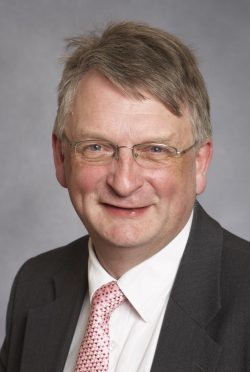Health chiefs believe a key way of solving GP recruitment problems in the north is to encourage more people to rethink their first port of call about health concerns.
Instead of calling a GP about an eye problem, for instance, members of the public could contact their pharmacists and be referred to an optician, or ask for a nurse practitioner to diagnose an ailment.
The advice came during the health board’s annual review which was held in Inverness’s UHI college campus yesterday.
The public event was conducted by Maureen Watt, Scottish Government Minister for Mental Health, and she was joined by John Connaghan, NHS Scotland chief operating officer, NHS Highland chairman David Alston and chief executive Elaine Mead.
Mr Alston spoke of the successes and challenges facing the board this year, stressing there will “have to be a period of significant change to deliver a high quality service in a sustainable way within budget”.
Questions put to the panel during the review highlighted concerns such as the need for more flexible models to provide better out of hours and emergency cover in the islands, as well as general GP recruitment problems across the region.
Gordon Bell, who works for Kate Forbes SNP MSP for Skye, Badenoch and Lochaber, asked how NHS Highland perceives meeting the challenge of a GP shortage across the region.
In response, Mr Alston referred to a recent trip to Riverbank medical practice in Thurso, highlighting that they had recruited a pharmacist for a vacancy instead of a GP, to deal with matters which their skill set matched.
Mr Alston said that the same result could be gained by the training of advanced nurse practitioners and that a dynamic practice manager can help explain why someone would not have to see a GP.
He added: “We also need to make sure that when GPs are in training there is the opportunity for them to be exposed to working in remote areas. Medics who get this chance in their training would have a safe environment to stretch themselves.
“Finally, we need to grow our own. We need to encourage young people here to move into medicine. We had good news recently that nurse training transferred from Stirling to this UHI site, and it gives us the opportunity to develop bespoke training.”
Ms Watt made clear in her response that GP scarcity was not just a Highlands and Islands issue, or even national issue, but a Western European one. She added: “It’s about that re-learning of our people’s first port of call. It’s about phoning NHS 24 or going on the website first. I once woke up with a sticky eye and instead of going to the GP I went to the pharmacy and they referred me to an optician.
“We also need to encourage school pupils to do the science subjects and help at every stage for them become qualified doctors and work experience for school pupils in a healthcare setting.
“The growing of our own is important, recruitment is important and Westminster Government immigration policy is important. All of these things impact on the workforce.”
Other subjects discussed yesterday included the topic of palliative care, where the panel emphasised the need for more open conversation with relatives about death and dying.










